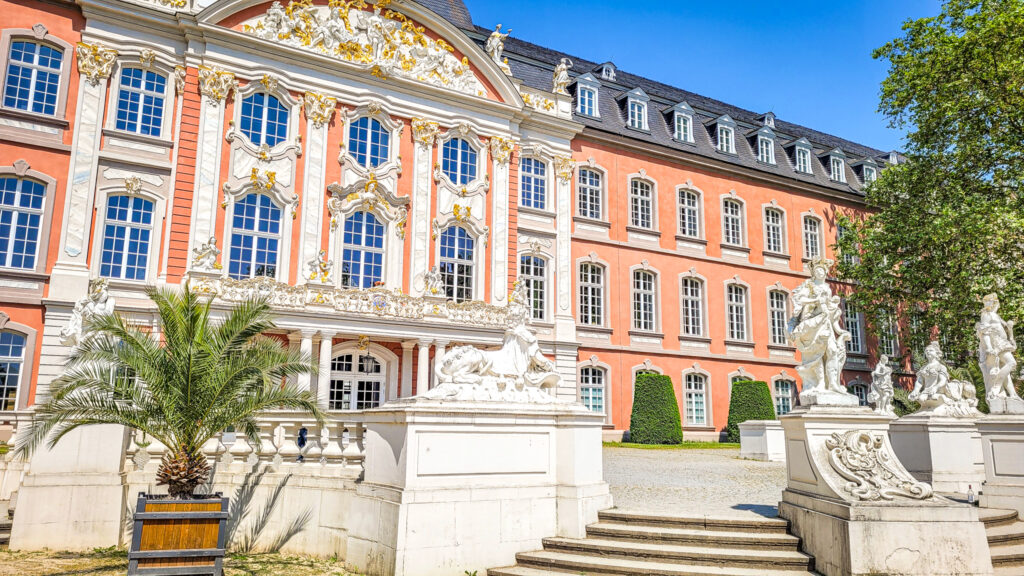If you’re looking for a city in Germany filled with history, stunning architecture, and beautiful scenery, then Trier should be on your list. Discover the history, architecture, and natural beauty of Trier, Germany. From ancient Roman structures to charming landmarks, this article highlights the best places to visit in this stunning city. Whether you’re a history buff or simply seeking architectural wonders, this guide has it all. Located in the Moselle wine region near the Luxembourg border, this city has a rich Roman past with well-preserved structures and monuments. In this article, I will take you through the best monumental highlights and places to visit in Trier, Germany.

Table of Contents
Explore the Roman Monuments
Start your journey in Trier with the Roman monuments, which are UNESCO World Heritage sites. Visit the Porta Nigra, one of the best-preserved Roman city gates in the world. Then witness the impressive Imperial Baths, which were once the largest Roman baths outside of Rome itself. The Basilica of Constantine and the Amphitheatre are also must-sees for those interested in the Roman era.
Porta Nigra
The Porta Nigra stands tall in the heart of Trier’s old town and is one of the city’s prime attractions. Constructed between 186 and 200 AD, the name ‘Porta Nigra’ means ‘Black Gate’ and originates from the dark colour of its stone. Made from large blocks of grey sandstone, the gate towers were once connected by a massive arch that spanned the road. The construction of the gate followed two centuries of Roman influence in Trier, which was then known as Augusta Treverorum.
When Trier became the capital of the Roman Empire’s western half in the 4th century, Porta Nigra became a part of the city’s massive walls. It was then used as a church, a dwelling, and even a stable in the Middle Ages. During the 17th century, the French military destroyed part of the gate and used it as a quarry to obtain building materials. It was only in the 19th century, through the efforts of a French Emperor Napoleon III, that the gate’s original structure was restored.
In 1986, the Porta Nigra, along with other Roman landmarks from Trier, was commissioned as a UNESCO World Heritage site. The gates’ restoration gave visitors the opportunity to see what life was like in ancient Trier. Imagine walking on the floors of the gate’s cobbled roadbed, seeing the original walls and arches. It’s a little bit like experiencing history firsthand.
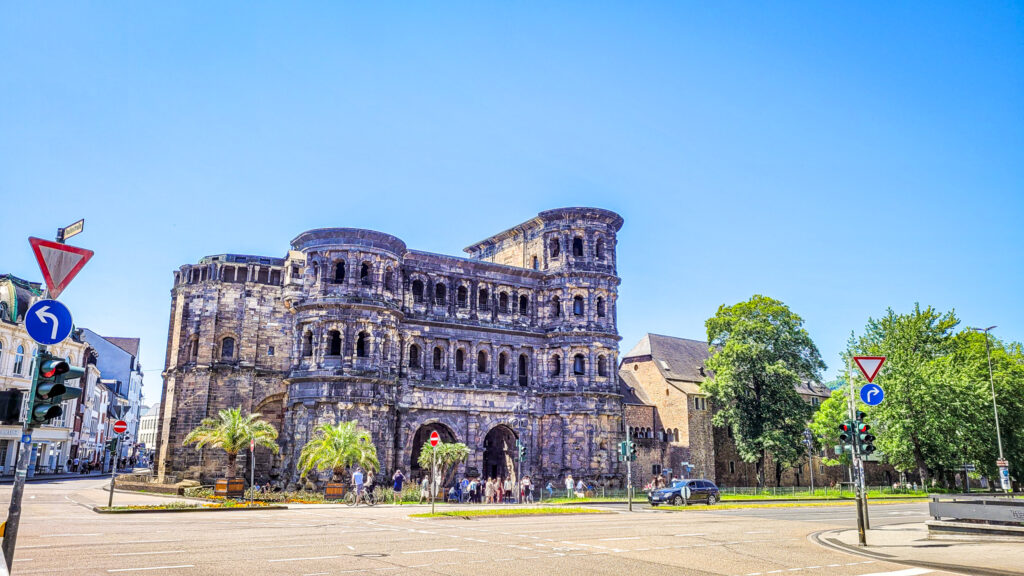
Imperial Baths
The origins of the Imperial Baths date back to the 2nd century AD, when Roman officials sought to improve Trier’s infrastructure by building new bathhouses. Over the centuries, subsequent emperors expanded and remodelled the baths, resulting in the grand complex that we see today. Visitors can explore a network of hot and cold rooms, swimming pools, saunas, and even an underground heating system that supplied hot air to keep the space comfortable year-round. Walking through the well-preserved ruins of the baths, one can imagine the vibrant sounds and sights of a bustling community enjoying the luxuries of the Roman era.
Aside from its functional and practical features, the Imperial Baths also boast incomparable craftsmanship and design. Elaborate mosaics, sculptures, and frescoes depicting mythological gods and heroes adorned the walls and floors, showcasing the Romans’ profound appreciation for art and aesthetics. Notably, the impressive “Labors of Hercules” mosaic appears on the walls of the caldarium, a hot room that served as the centrepiece of the baths and offered visitors a place to relax and socialize.
More than just a relic of the past, the Imperial Baths continue to stand out as a testament to the Roman Empire’s influence and legacy. Today, visitors from around the world flock to Trier to admire its spectacular ruins, which have been designated a UNESCO World Heritage Site. The baths remain a prime example of how the Romans were able to combine both functionality and luxury in their architecture, offering a glimpse into what life was like during their reign.
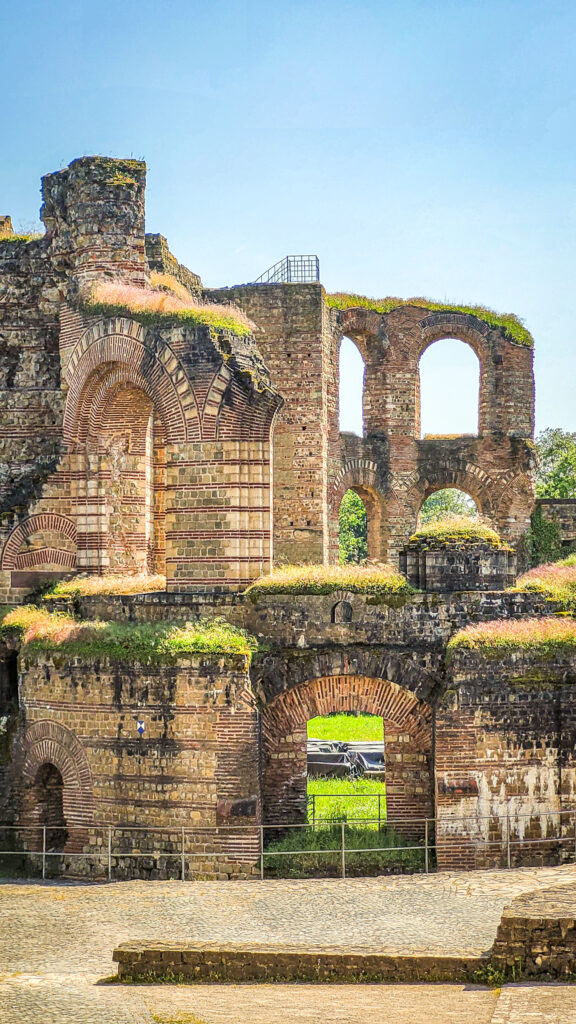
Basilica of Constantine
The Basilica of Constantine is the largest surviving structure from Roman times in Trier. Its construction began in AD 306, on the orders of Emperor Constantine the Great, who chose Trier as the capital of the western Latin Empire. The Basilica served as a legal and administrative centre for the city, where the emperor and his officials would hear cases. It was an unparalleled structure that served as a model for other buildings throughout Europe.
The Basilica’s architecture showcases several breathtaking features that highlight Roman architecture and design prowess. The building stands at 67 meters long, 27 meters wide, and has a height of 33 meters. The interior of the Basilica is a marvel to behold, comprising impressive marble columns, vaults, and arcades. Additionally, it has a lavishly decorated apse that boasts frescoes of Christ and the twelve apostles.
The Basilica has undergone numerous transformations in its history. From being used as a church to being a market hall, part of the Electoral Palace, and even a storage place for ammunition. During the devastating bombing of Trier in 1944, the building was hit, and its roof was destroyed. Later, the restoration process began. Today the Basilica is a UNESCO World Heritage Site, and also one of Trier’s most visited tourist sites.
Visitors who come to the Basilica of Constantine can immerse themselves in the beauty and artistry of this iconic landmark. The Basilica is a must-visit, especially for those interested in history, art, and architecture. Guided tours are available for visitors to show the magnificent structure and outstanding features of the Basilica up close.
Amphitheatre
The Amphitheatre of Trier is a magnificent example of Roman architecture, engineering, and culture. Its construction dates back to around 100 AD. Making it one of the oldest and largest of its kind in the world. The arena could seat up to 20,000 spectators, and was used for gladiatorial games, animal hunts, and public events for almost four centuries. In the fifth century AD, as the Roman Empire began to decline, the Amphitheatre fell into disrepair and was eventually abandoned. Over the centuries, it served as a quarry for builders seeking materials for new structures, and it became a popular spot for picnics and leisure activities.
Despite its long and varied history, the Amphitheatre has managed to survive to this day. Perhaps the most impressive feature of the ruins is the underground tunnels, which were used to transport wild animals and gladiators to and from the arena floor. Visitors can take a tour of the tunnels and gain a deeper understanding of the daily workings of the arena. Above ground, the remains of the seating area and the outer walls are still visible, giving visitors a sense of the grandeur that once existed.
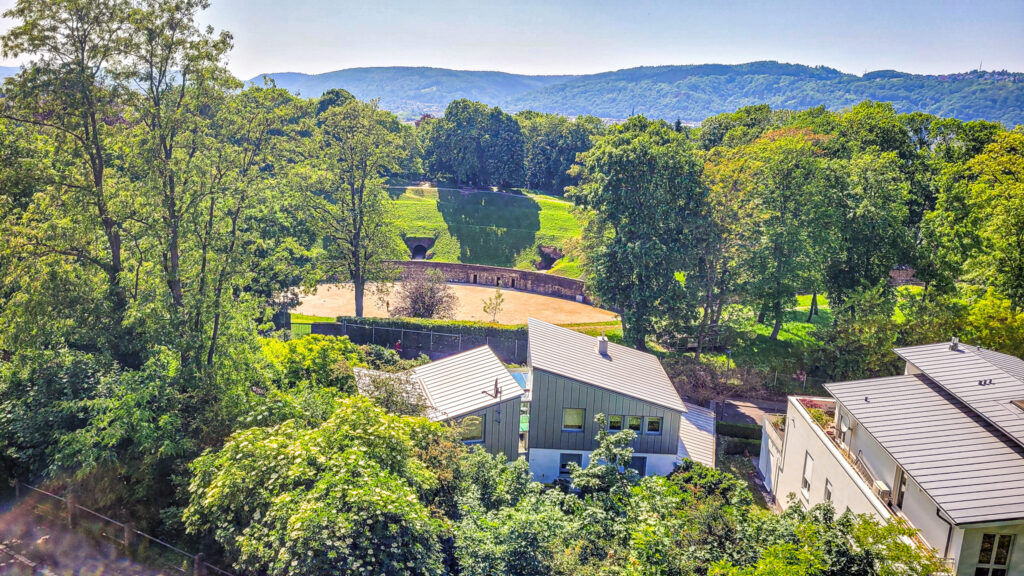
Saint Peter’s Cathedral
The history of the Cathedral of Trier dates back to the Roman Empire, with construction starting in the 4th century AD on the site of a former palace. This original structure was later expanded and modified during the Middle Ages, with Gothic elements added in the 13th century and Baroque touches in the 17th century. As such, the cathedral offers a unique blend of architectural styles and a fascinating glimpse into the evolution of European religious buildings over the centuries.
One of the most striking features of the Cathedral of Trier is its impressive size and scale. With a height of over 45 meters and a length of nearly 112 meters, the cathedral is one of the largest in Germany, and serves as a testament to the importance of Christianity in the region. The interior is equally breathtaking, with intricate carvings, stunning stained glass, and a serene atmosphere that invites visitors to contemplate and reflect.
Another noteworthy aspect of the Cathedral of Trier is its rich cultural and historical significance, with connections to some of the most influential figures in Christian history. Notably, the cathedral houses the Holy Robe, an important relic believed to be the seamless robe of Jesus Christ, which has been enshrined in the cathedral since the 12th century. The cathedral also features a number of ornate tombs and monuments, including those of important archbishops and princes from the region.
Of course, a visit to the Cathedral of Trier would not be complete without taking note of some of its more whimsical and charming features. For example, the cathedral boasts a number of delightful gargoyles and grotesques, as well as a famous astrological clock that dates back to the early 15th century.
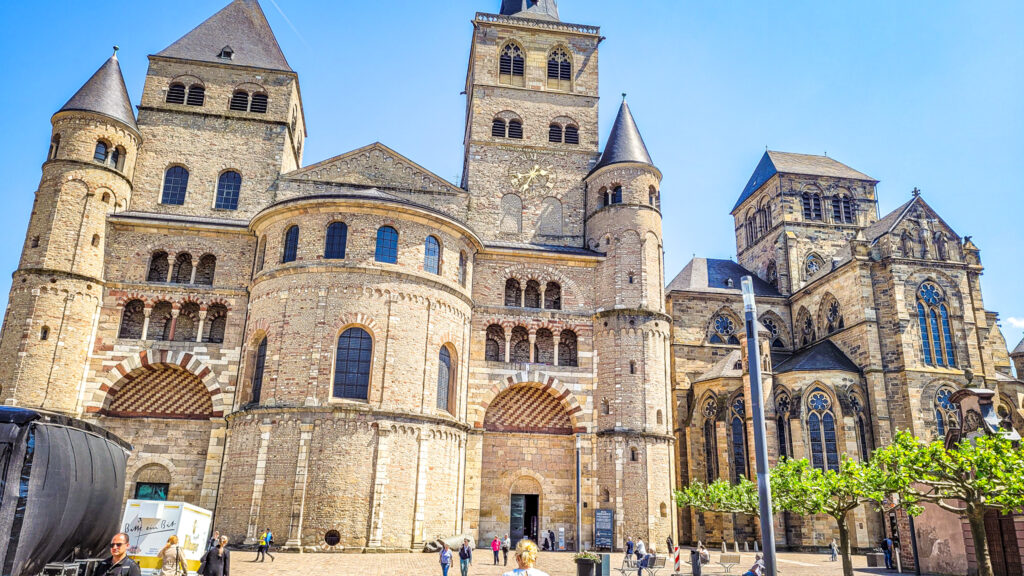
Discover the Hauptmarkt
The Hauptmarkt Trier, also known as the Main Market Square, is located in the Old Town of Trier. It is a vibrant area that buzzes with activity all year round. Historically, the Hauptmarkt served as a marketplace where traders from all over Europe used to gather in the Middle Ages. Today, it is still a bustling centre of trade and commerce. Visitors can find fresh produce, flowers, gifts, souvenirs and more as they walk through the various market stands.
The impressive surroundings of Hauptmarkt Trier add to its charm and historical significance. The majestic St. Gangolf’s Church is a prominent feature of the square, with its twin towers reaching up to the sky. This church is one of Trier’s oldest, dating back to the 12th century. The market square is also home to the Steipe, a grand Gothic style building that served as Trier’s Town Hall. It was first built in the 15th century, destroyed in the Second World War, and reconstructed in the 1970s.
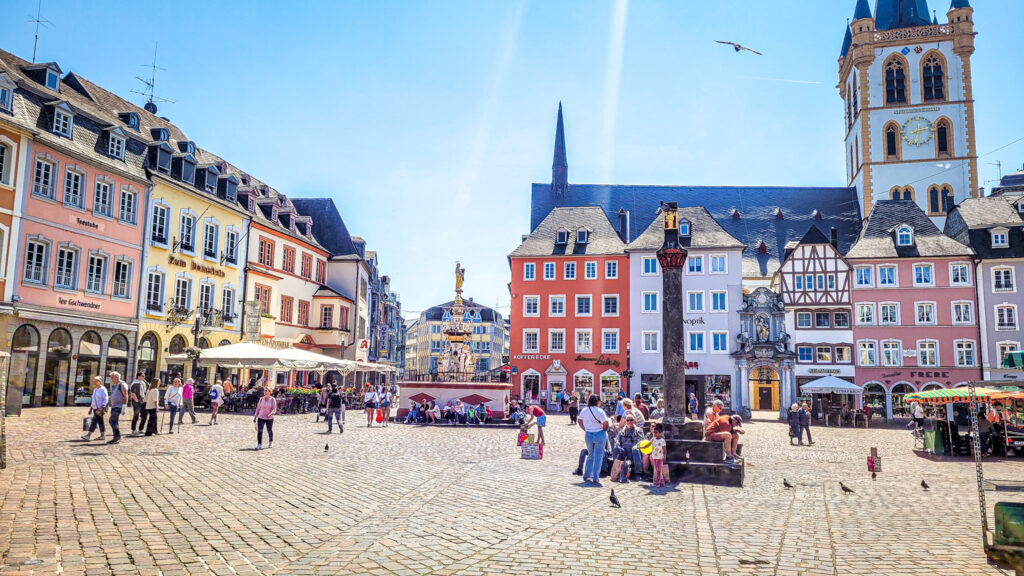
St. Peter Fountain at the Hauptmarkt
Another intriguing aspect of Hauptmarkt Trier is the Fountain of St. Peter. This unique monument is located at the centre of the square and features a statue of St. Peter, the Patron Saint of Trier. The fountain was built in the 16th century and has undergone several renovations since then. It is a popular spot for visitors to take pictures and enjoy the serene atmosphere.
The history of Hauptmarkt Trier is also connected to some significant events that occurred during the city’s tumultuous past. In the 16th century, Trier became a Protestant stronghold and was involved in the Thirty Years’ War. The Hauptmarkt is where the public executions of several Protestant leaders were carried out. The memories of this grim period are commemorated in the square today through the memorial plaques that have been placed on the buildings.
Hauptmarkt Trier is not just a place to appreciate the city’s rich history, but also a spot to indulge in some of the local delicacies. The square is surrounded by a variety of cafes, restaurants, and wine bars that offer authentic German cuisine. Visitors can savour classic dishes like bratwurst, sauerkraut, and schnitzel, along with their choice of local wines.
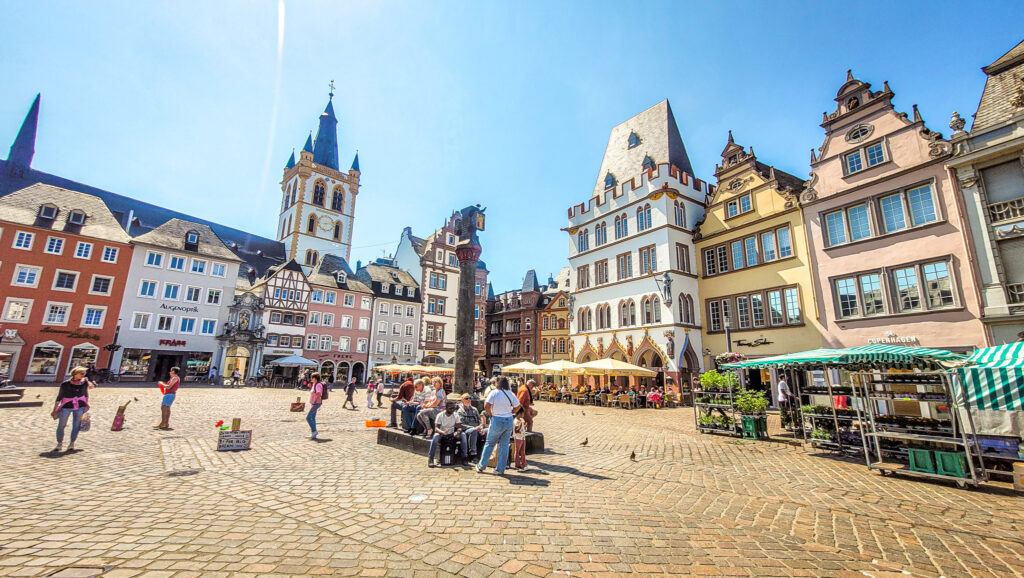
Visit the Karl Marx House
The first thing you’ll notice about the Karl Marx House is the simple yet elegant baroque architecture. This house was built in the early 1700s and belonged to Karl Marx’s family for several generations. The house was modest by the standards of the day, considering the Marx family were well-respected attorneys in the city. The building’s façade is unassuming, and the interior reflects the simple yet elegant style of the 19th century. The exhibition has six rooms spread over three floors, including a portrait gallery, Marx’s personal library, and an auditorium.
The major displays on the first and second floors provide a timeline of Marx’s life and career. They start from his early years to his groundbreaking theoretical works. The exhibits include original manuscripts of his writings, letters, family photos, and personal belongings. These items connect visitors to Marx on a more personal level. There are interactive exhibits that help bring to life the political and social context of the 19th century.
The Karl Marx House’s location is also a big bonus. The museum is centrally located in Trier’s old town. Just a five-minute walk from the Roman monuments that Trier is famous for. Beyond the exhibitions themselves, visitors can enjoy a coffee or snack in the café in the garden behind the house. The gift shop offers a wide range of books and souvenirs.
Take a stroll in the Palace Garden
The Palace Garden, or “Palastgarten” in German, is located in the heart of Trier and spans over 10 hectares of lush greenery. The garden was originally designed in the late 17th century as the private garden of the Elector of Trier. However, in the early 19th century, the garden was transformed into a public park where anyone could come and enjoy its serene beauty. Throughout the centuries, the Palace Garden has served as a site of various political events and social gatherings, including concerts, festivals, and carnivals.
The Palace Garden is not only a stunning natural landscape, but it also showcases some impressive architectural features. As one of the most popular sights in Trier, the Palace Garden is an important cultural hub for locals and tourists alike. The garden hosts several events throughout the year, including classical music concerts, open-air theatres, and art exhibits. Additionally, the garden has served as a backdrop for several films and television shows, making it an iconic location in the entertainment world. Perhaps the most important cultural aspect of the Palace Garden is its role in preserving the history and traditions of Trier.
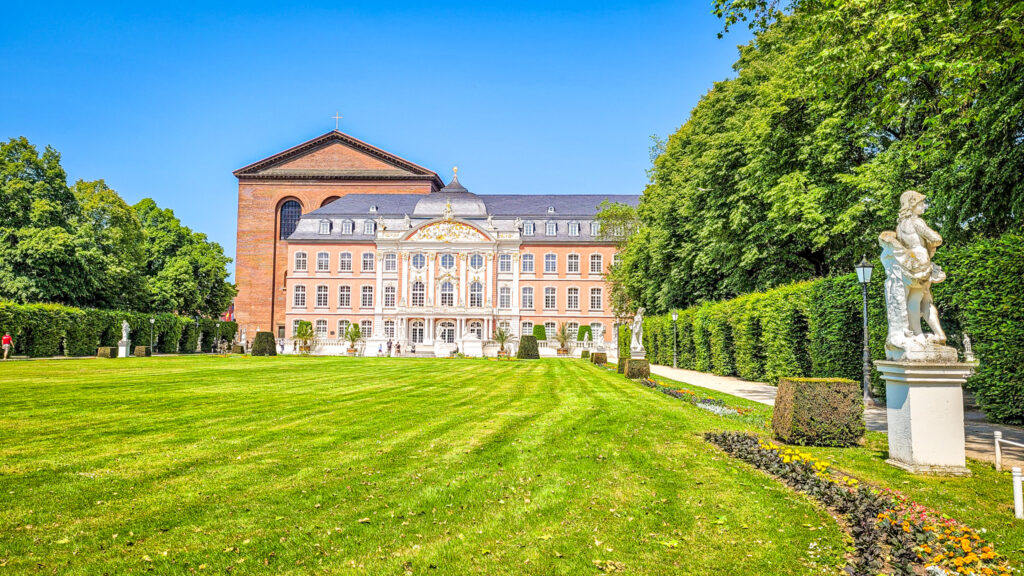
Visit Petrisberg and viewpoint
Petrisberg is a historic hill and district in Trier, Germany. It gained prominence during the Roman Empire when it served as a strategic vantage point for watching over the city and its surroundings. In the early 19th century, it was a crucial location during the Napoleonic Wars. The hill served as a military outpost and played a significant role in various battles, including the Battle of Trier in 1814. Petrisberg went through major renovations after the wars, and many new buildings were constructed.
Petrisberg district is also home to one of Germany’s largest and most beautiful university campuses. The university has over 15,000 students and 800 academic staff studying and teaching in its various faculties. The campus hosts scores of events throughout the year, including concerts, exhibitions, and lectures by renowned scholars and public figures.

Scenic viewpoint at Thielsburg Castle
The robust and impressive Thielsburg Castle is a significant landmark that rises above the lush green valley of Moselle. The castle is perched on the hillside, and it is partially built into the rock of the hill. Records state that Thielsburg was first built during the middle of the 12th century by the Archdiocese of Trier. This magnificent castle had many uses throughout history. Initially it was a garrison, then as a prison, and then as a headquarters.
The original castle of Thielsburg was destroyed in the late 17th century during wars and revolts in the region. Over years of reconstruction, it became a bastion of the French Army during the Napoleonic Wars. Then, in 1818, the castle became the headquarters of the Prussian cavalry.
Today, the remnants of the castle stands as a testament to German history and architecture. It’s a mix of Gothic and Baroque elements, exquisite details on the tower design fascinate visitors. Experience the thrill of walking on castle walls and imagining the battles fought below.
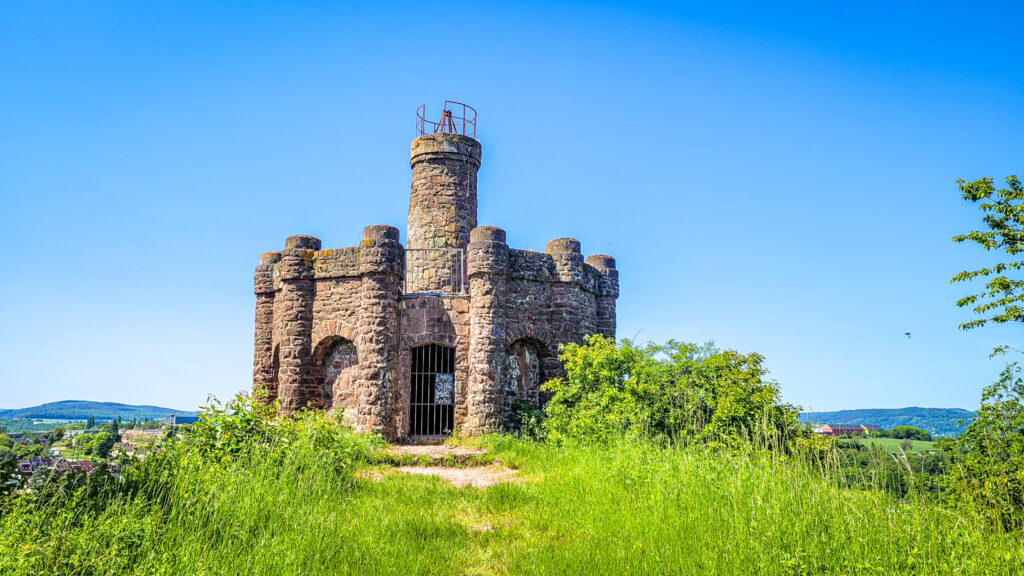
Wine Tasting
The region of Trier, nestled in the heart of wine country, is renowned for its exceptional wines that tantalize the taste buds. Take a leisurely stroll through the picturesque vineyards and immerse yourself in the rich history and winemaking heritage of the region. Experience the warm hospitality of the local wineries as you indulge in a delightful wine tasting session, savoring the distinct flavors and nuances of the finest wines Germany has to offer. To truly delve into the cultural tapestry of the area, consider joining one of the captivating local tours where you can expand your knowledge of the wine industry, discover the captivating stories behind the vineyards, and learn about the unique grape varieties that contribute to the creation of these exceptional wines.
Take a Boat Tour
Exploring Trier from the river is a unique and beautiful experience. Take a boat tour that will take you past the vineyards, historic landmarks, and scenic landscapes. This is also an opportunity to enjoy Germany’s famous beer and wine while enjoying the sights and sounds of the Moselle River.
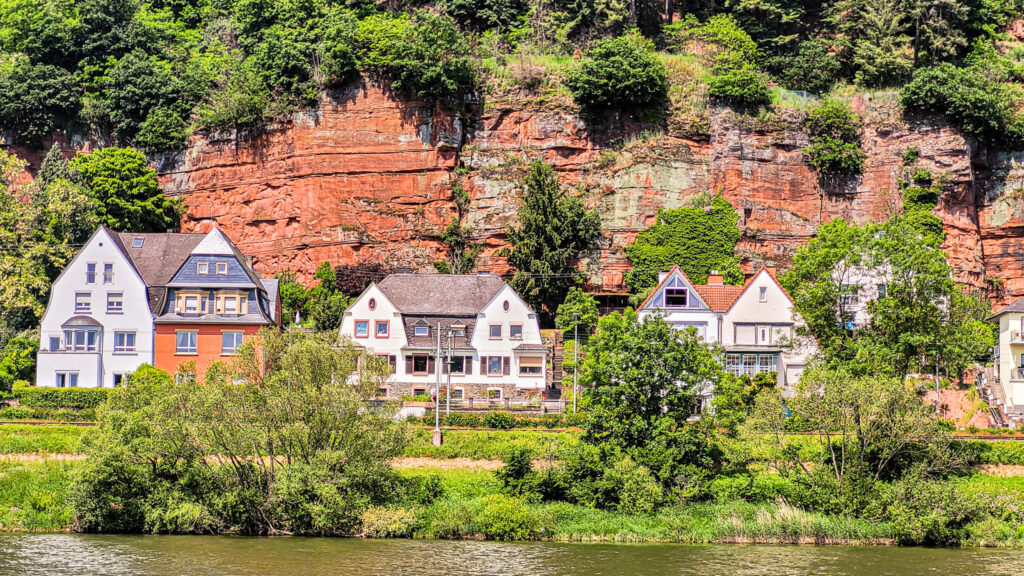
Trier is a city that offers something for every kind of traveller. Whether you’re a fan of history, architecture, wine, or nature, this city has it all. With so many things to do in Trier, it’s no surprise that this city attracts visitors from all over the world. Explore the Roman monuments, taste the local wine, relax in a spa or simply take in the charm of the city. There’s something for everyone in Trier. So pack your bags and head to Trier to discover one of Germany’s best kept secrets.
Monumental highlights in Europe
Embark on a journey through the monumental highlights of Europe. Immerse yourself in the enchanting world of Harry Potter in Edinburgh or uncover the royal allure of Princess Sisi in Vienna. Explore the magical fairy-tale castles of Sintra in Portugal, marvel at the eclectic and innovative architecture of Gaudi in Barcelona, or wander around at the ancient Roman masterpieces in Rome. And when you find yourself in Belgium, don’t miss the chance to visit the monumental churches of Antwerp, including Sint-Andries Church, Sint Carolus Borromeus Church, and the Cathedral of Antwerp. When you visit Brussels in the spring, make sure not to miss the delightful experience of strolling around the Serres van Laeken. It’s a fantastic place that shouldn’t be overlooked!
